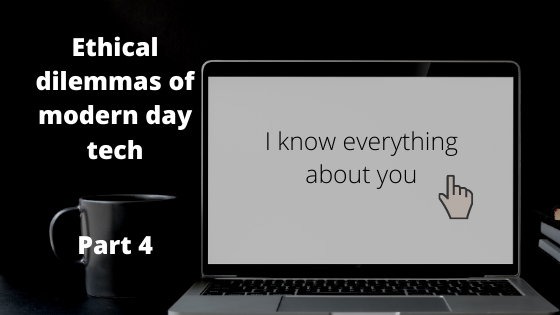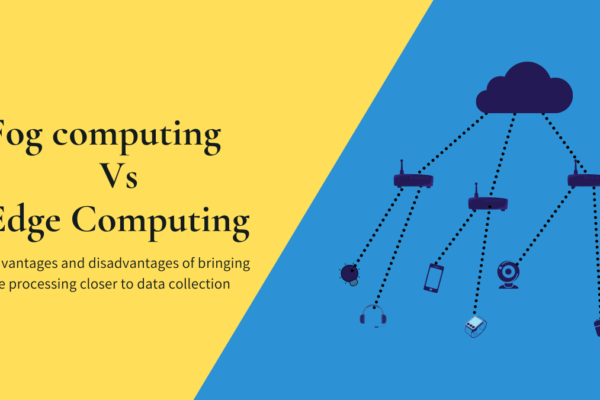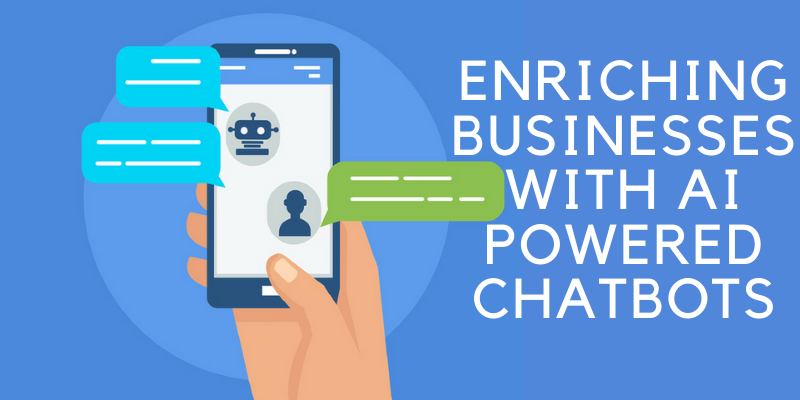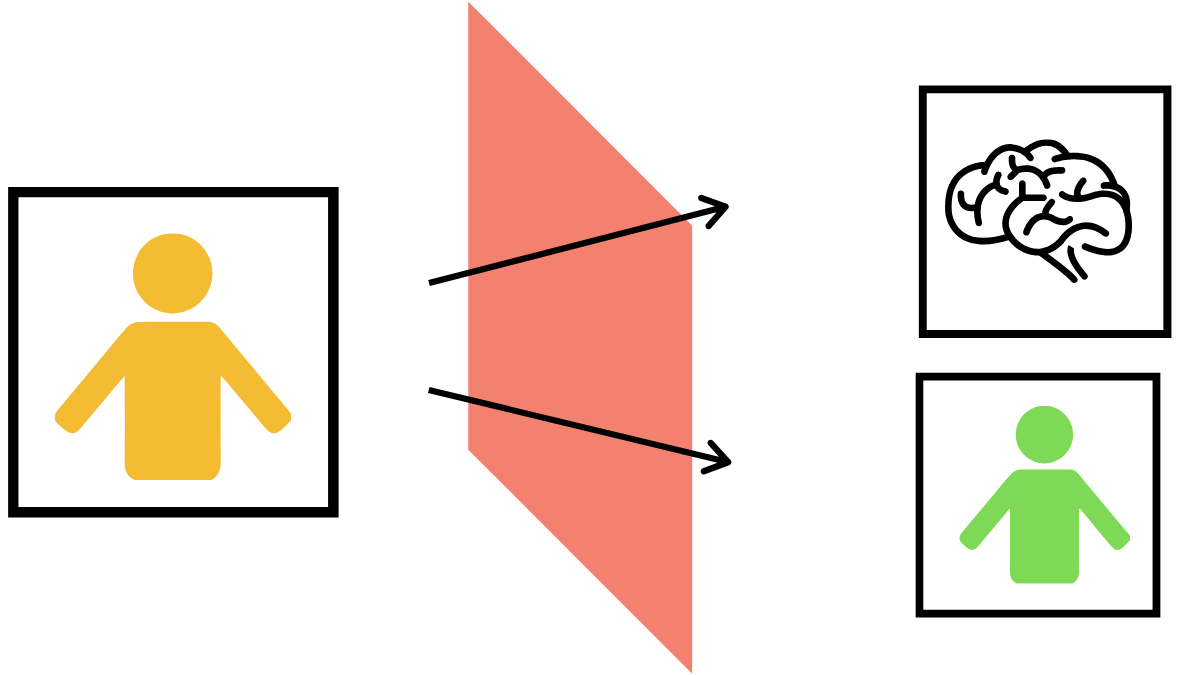Privacy has been one of the major talking points last year. Facebook Cambridge Analytica data scandal seems to have really woken people up about how “free products” were available as free. Last year was a year of turmoil for many tech companies with regulators slapping huge fines for data breaches and usage of user data without prior consent. Facebook was asked to pay a $5 billion dollar fine for misleading users about how their data was used. The Federal Trade Commission found Google guilty of using kid’s data on YouTube without consent from their parents and were asked to pay a fine of $170 million. An entire year of huge fines for privacy breaches also triggered a wave of research directed at finding how much value the general population ascribes to their privacy.
As more and more devices (why would you connect your wall clock to the internet?) are getting connected to the internet, privacy is going to be a major concern. Jokes about FBI agents aside, more and more people are covering their laptop and phone cameras when not in use(looking forward to a phone with a physical switch for the camera and the mic). At some point, smart home devices that listen to your commands were seen as futuristic, but now people are becoming increasingly skeptical about devices that listen and analyze every spoken word. And I personally think that Black Mirror is getting closer to reality or reality is getting closer to Black Mirror.
Amazon ring also had a fun run last year with regards to privacy. The video doorbell company gave access to various law enforcement agencies to view videos from the installed cameras. While pitched as a security measure as part of a digital neighborhood watch, it raised questions on obtaining video feeds from ill-informed homeowners. But Ring seems to be going full throttle, announcing plans to add facial recognition features.
As smart home appliances are becoming more and more ubiquitous, it may not be long before a tussle between tech companies and law enforcement over access to recordings and activities on devices happens. While companies like Apple may be able to withstand the pressure from law enforcement, companies with fewer resources may cave under pressure raising questions on privacy. There have already been cases where law enforcement demanded digital assistants recordings for solving crimes.
Policy shifts in privacy
As privacy concerns around internet-connected devices increase, more companies are reiterating their privacy policies as a selling point. Even though AI applications usually require high computing power and cloud connectivity, companies are taking privacy concerns more seriously and are trying to work out on-device computing to alleviate privacy concerns. When Pixel 4 was announced, Google made it a point to emphasize that the transcriptions done on its new recorder app are done on the phone without sending the data to the cloud. When a company whose CEO once said the homeowners should move in response to complaints about their homes being photographed makes privacy a valid point, maybe we can guess that there has been a shift in perspective. And this may not be voluntary. With the EU passing the General Data Protection Regulation being passed in 2018 and the California Consumer Privacy Act that came into effect on January 1st, 2020, and more privacy-related laws and regulations expected to come soon, major tech companies are trying to position themselves as champions of privacy. Google recently announced that it plans to phase out third-party cookies by 2022. As companies that sell devices with microphones that listen to wake words, they can’t afford to have a bad reputation about privacy.

Amazon recently announced the option to delete the voice recordings made on your Echo devices but knowing that they used to store these recordings in the first place doesn’t instill a lot of confidence. It also didn’t help when it came out that Amazon employed thousands across the globe to listen to audio recordings from Alexa to improve the system. Google sort of made this year’s CES all about privacy, announcing Assistant commands allowing users to delete and review voice recording data stored by the Assistant devices. In fact most of CES this year was about companies talking about privacy. Facebook announced a new version of the “Privacy Checkup” tool and Amazon Ring announced an app update that allows users to opt-out of video requests from law enforcement. It’s as if the companies are trying to tell that they don’t need more rules, that they’ll be good kids.
OTA updates – good and the bad
As products with OTA updates become more common, with even our cars receiving them, there comes questions regarding a product changing its nature after purchase by customers. Everyone loves getting advanced features after purchase, but let’s consider the case of ring doorbells. Updates that allowed law enforcement access came much later after many customers purchased them.
Providing updates after the product is sold may appear to be a wastage of resources for the manufacturer, and to an extent that may be the case. But manufacturers have an incentive for doing so. Customers may not wish to buy a product after a year of its release and would rather buy newer models with better features from competitors. The companies can produce and release brand new products, but by releasing continuous updates they can keep selling the product they have spent so much resources on while developing. It also motivates people to buy products from a particular brand if they have a reputation for providing updates for long periods. Most of the time customers consider themselves lucky whenever they get these updates. But manufacturers don’t provide a guarantee on how long they will provide these updates.
Apparently that depends on the type of product. Smartphone users don’t expect to get updates after more than two years of release(depending on the brand), but there was a massive outrage following Sonos announcing that it will stop sending updates to its legacy hardware. I was surprised at the outrage because from what I understood, these systems were around 14 years old. I would be surprised if any of my devices got updates for such a long duration. The problem here is that if users keep using the old Sonos speakers, their new speakers will also not get these updates. While Sonos claims that this is to prevent any lag from the old device, customers are not happy and I won’t be surprised if this is a move to make customers buy new devices and make them throw out the old devices that were more or less a money pit for Sonos. Combine this with the way user can get the 30% off – users have to put their old speakers in a “recycle mode” which essentially bricks the device making the speakers being useful only for scraps. While reusing the speakers would be a better option for the environment, the company claims that this is to prevent old Sonos speakers from ending up with new owners not getting the expected Sonos experience. This brings us to
OTA updates and planned obsolescence.
OTA updates bring the possibility of an advanced form of planned obsolescence. Planned obsolescence is a controversial practice of making products not function after a certain period of time to make the customers buy new products. While new products can make old technology obsolete, designing products to ensure failure after a certain duration is, well that’s just wrong. But now, products can be made obsolete with OTA updates. Smartphone users have long complained about manufacturers throttling down their phones or reducing battery life through OTA updates. Apple fans were not happy when it came out that the long-held suspicions of old iPhones being slowed down deliberately came out to be true.
Tesla was recently on news for allegedly removing “Enhanced autopilot” and “Full self-driving” from a car after it was purchased from a third party dealer by a customer. The used car was purchased under the impression that it had the features, but after the purchase, Tesla did an audit and came to know that features were not paid for. Tesla subsequently removed the features in the next software update. While the situation was a simple confusion and not Tesla’s fault, the customer wouldn’t have been thrilled and it does raise questions about the control manufactures have over a product that has already been sold.
Essentially, smart home devices are a compromise between privacy and convenience. Obviously systems that understand our habits and routines can better help us. I’ve had people tell me that they’re happy google is collecting their data because it allows Google to provide them with more customized services. As much as I’d like to have a customized AI assistant that can actively assist me, I’m not sure I am ok with my data being sent to a company’s servers. And as much as I love getting updates years after a purchase, I don’t like the risk of my phones being made obsolete deliberately.
This is the last part of a series on the ethical conundrums faced by modern day tech. Click to read the first part, the second part, and the third part




